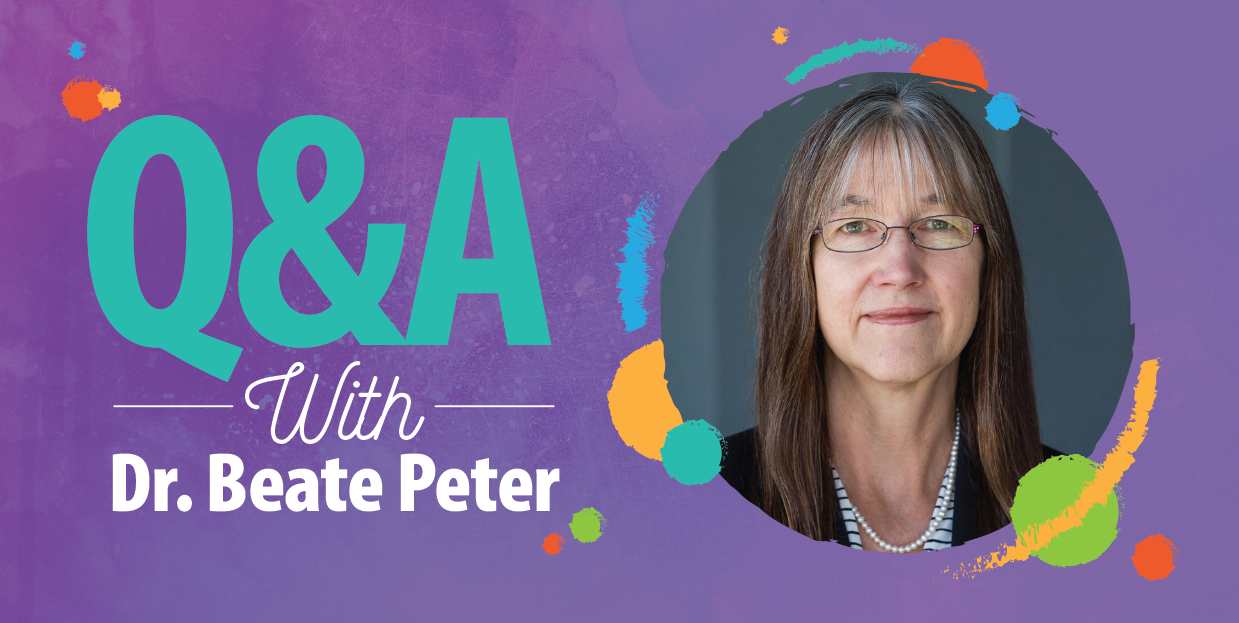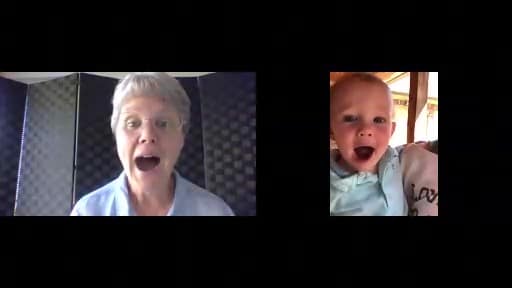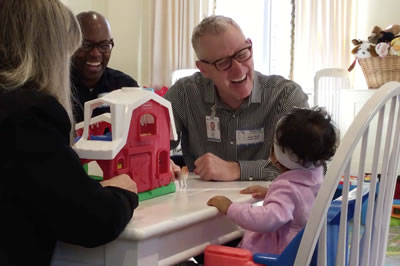
Dr. Beate Peter is an assistant professor at Arizona State University’s College of Health Solutions, where she directs the Speech/Language Genetics Lab. Her research explores connections between genetic variation, changes in brain structure and function, and the behavioral changes associated with communication disorders. She hopes to translate research insights into the design of new early intervention treatments for children who are genetically predisposed to develop speech or language delays.
In early 2019, she launched a clinical trial to study the effects of a language intervention for infants with classic galactosemia, a rare genetic condition that predisposes children to developing speech and language delays. We caught up with her to learn more about the study and how it will use LENA technology.
Q: What is classic galactosemia?
Children who have classic galactosemia lack an enzyme that splits galactose, a type of sugar, into its constituents. As a result, they have too much galactose in their bloodstream, and it’s toxic to the nervous system. Even though these children are put on a very restricted diet, many of them have speech, language, motor, and intellectual delays.
Q: What is your study evaluating?
In the United States, babies with classic galactosemia are identified through newborn screening. The minute these newborn diagnoses are made, we already know that these babies are at high risk for difficulties with speaking and using language, but up until now, no one has used that knowledge in an experimental way to see if these difficulties can be prevented. The problem is that children can’t be formally evaluated for speech and language delays until two or three years of age. This is what typically happens with children who are diagnosed with classic galactosemia as newborns, even though, in their case, the difficulties can be predicted. So I said, rather than wait until they’re older, how about we do a clinical trial of a preventive approach.
Q: What prevention have you designed?
When babies are two months old, we start teaching their parents ways to stimulate their speech and language development. The “Babble Boot Camp ©” is a program designed for families with infants aged 2 months to 24 months, implemented by a pediatric speech/language pathologist with special expertise in early childhood.
The program consists of goals and strategies that accompany these infants from the earliest stages of development until they’re two years old. We use routine activities and simple tools — everything that we could think of — to boost the babies’ communication and interpersonal skills.
For example, we encourage the parents to respond to little sounds that the baby makes, because it will reinforce those sounds. If the baby squawks, you squawk back. So, we’re laying down the rudimentary foundations of conversational turn-taking as early as 3, 4, and 5 months. At six months, when babies begin to babble, we encourage parents to have babble conversations with them. We know from other research that the more a baby babbles — in terms of quantity and quality — the more complex their higher speech and language abilities tend to be later on. We want to find out whether we can boost speech and language abilities by increasing the quantity and complexity of earliest vocalizations. Of course, we work directly on words and sentences as well when the children are a bit older.
Because classic galactosemia is rare, families from all over the United States participate. We even have families from overseas who participate. The entire program is done online, using telepractice software that’s designed for research and clinical purposes, especially regarding the participants’ privacy and confidentiality. The families meet with the speech pathologist once a week via a computer or smartphone. It’s that easy.
Q: What makes this study unique?
No one has ever tried to make babies’ babble behaviors more sophisticated before. We want to see if we can influence children’s later speech and language outcomes by working on the precursors of speech during the prelinguistic stages. We also work on their vocabulary growth and syntactic complexity until 24 months of age, when the active intervention ends. When the babies are two years old, we’ll send them to a speech/language pathologist to get standardized testing in speech and language, and we’ll do the same thing when the babies are three and four years old.
Q: How are you using LENA SP?
Children in the treatment and control groups will be monitored using LENA once a month. We are analyzing LENA data in two ways. We’re looking at the automated measures like child vocalizations per hour and conversational turn-taking. We’re also transcribing five-minute segments with the highest count of infant vocalizations.* A team of students will transcribe the babies’ vocalizations and utterances using the International Phonetic Alphabet and analyze them for things like babble complexity and accuracy of word production, as well as evaluating how early the babies are transitioning from their prespeech vocalizations to actual, meaningful speech.
Q: What are the benefits of using LENA SP?
LENA SP gives us a wealth of data that we couldn’t get any other way. The continuous recording of up to 16 hours captures a great quantity of linguistic and acoustic data because it’s positioned so close to the infant’s head. So we get high-quality acoustic recordings that we can use in multiple ways for analysis. The LENA algorithm allows us to get many automated metrics such as vocalizations per hour; the sound file that we get allows us to do many additional analyses of the actual vocalizations and utterances.
Q: What do you hope to accomplish with this project?
I hope to show that if we already know infants have a genetic risk for severe speech and language disorders, we can do so much better than the current “wait and see” approach, which is post-diagnostic remediation. My greatest hope is to show that being proactive through prevention is a much more effective strategy. If our fully-powered clinical trial can provide that, the hope for the future is that babies with classic galactosemia can qualify at birth for preventive speech and language services.
The bigger picture that I’m interested in is finding genetic causes of communication disorders across the board. If prevention works for babies with classic galactosemia, maybe it would work for babies with other types of genetic predispositions for speech and language struggles. This could open up whole new ideas for preventive interventions that are not available yet.
If you’re interested in enrolling a child with classic galactosemia in this study, please reach out to Dr. Peter by emailing babblebootcamp@asu.edu to set up a phone interview. Infants ages 0-5 months are eligible for inclusion into the control or treatment groups, and infants ages 4-18 months are eligible to participate in an additional control group.
*Editor’s Note: In LENA Start, LENA Grow, and LENA Home, audio recordings are automatically deleted immediately after processing into data (number of words and turns, etc.). LENA SP and LENA Pro are the only two versions of LENA that allow the option to retain audio. Each group provides its parents with its own consent form, and parents have the option to participate or not.




